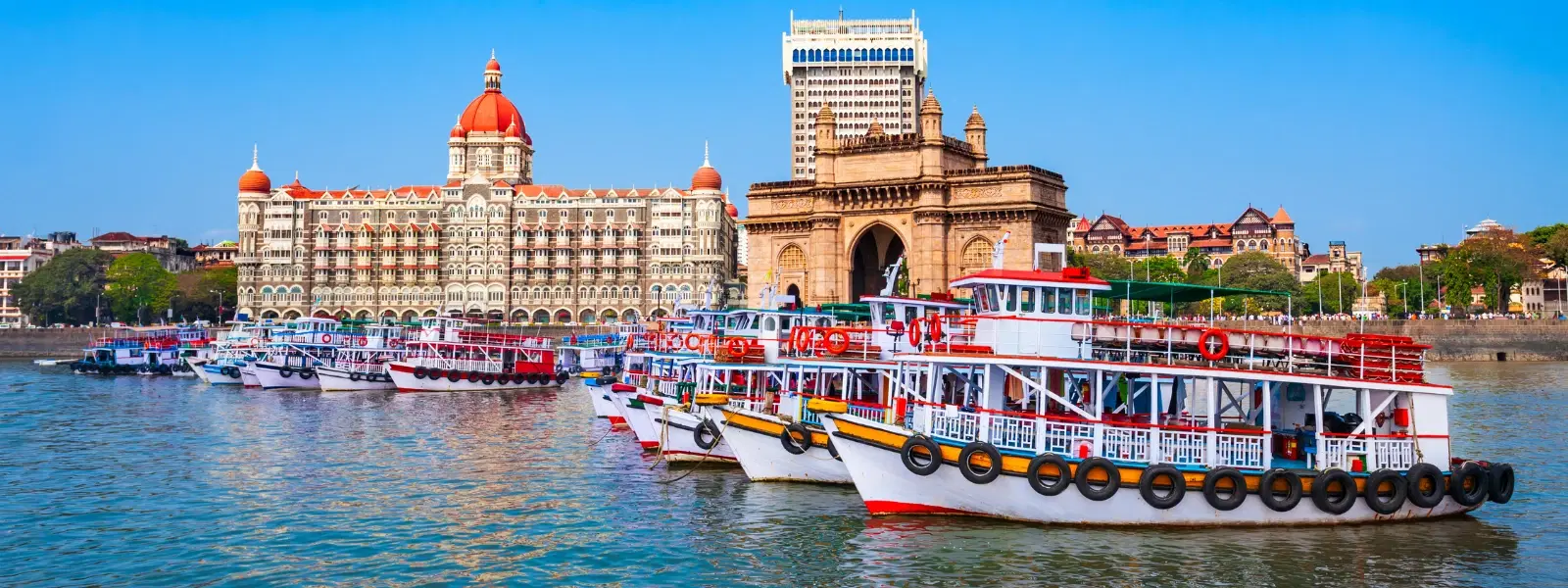
Flights
•04 min read

The ancient Elephanta Caves, a UNESCO World Heritage Site, lure travelers with their mysterious carvings and rich history. Journeying to this iconic destination via ferry from Mumbai and the Gateway of India offers not just a quick escape from the bustling city but a chance to mingle with history amidst scenic views of the Arabian Sea.
Situated on Elephanta Island, the Elephanta Caves are renowned for their impressive rock-cut sculptures and ancient temples that date back centuries. The site has captivated visitors with its intricate artwork and spiritual ambiance, standing as a testament to India’s rich cultural legacy.
To reach this historic marvel, travelers have two main ferry options: one from Mumbai at various boarding points and the other from the iconic Gateway of India. Both ferry services play an essential role in making the journey as memorable as the destination. Whether you are planning a quick visit or a more relaxed tour, understanding these ferry routes is crucial for a seamless trip.
The Gateway of India ferry route is one of the most popular ways to reach Elephanta Island. Departing from a historic monument itself, this route offers travelers a delightful cruise along Mumbai’s rugged coastline. The gentle sway of the sea, accompanied by panoramic views of the city skyline, creates an immersive experience that sets the tone for the adventure ahead.
Ferries from the Gateway of India typically operate between 9:00 AM and 5:30 PM. Departures occur every 30 minutes, making it easy to plan your visit. Ticket prices are affordable, generally ranging from ₹150 to ₹200 for the regular class. For those seeking a more comfortable journey, luxury classes are available at a slightly higher price.
Advantages: The proximity to major tourist attractions, ease of boarding, and well-established ferry service make this option very convenient.
Disadvantages: However, the popularity of this route sometimes results in overcrowding during peak hours, leading to potential waiting times.
This alternative route to Elephanta Island begins from various points across Mumbai. Unlike the bustling Gateway of India, these ferries offer a more relaxed ambiance, often appealing to locals and travelers looking for a less crowded experience. The journey provides a unique perspective of the city’s waterfront and a serene passage to the island.

Timings for Mumbai ferries vary, so it’s important to check the schedule in advance. Ticket prices typically mirror the Gateway offerings, with a regular fare falling within the ₹150 to ₹200 range. Differences in service levels or boarding locations can sometimes affect the overall fare, but both options remain budget-friendly.
Advantages: One of the key benefits of the Mumbai ferry ride is the reduced crowd, making it more appealing for frequent travelers or families seeking a quiet trip.
Disadvantages: The main drawback is the limited ferry options compared to the consistently available services at the Gateway of India.
The Gateway of India ferry provides unparalleled convenience with its central location in a popular tourist hub and frequent departures. In contrast, the Mumbai ferry might require extra travel to reach alternative boarding points, though it compensates with shorter waiting times and fewer crowds.
Both ferry options offer similar pricing for regular boarding, but slight variations occur with additional luxury or alternative class services. Travelers on a budget may find either option suitable, while those seeking premium services might lean towards the convenience of the Gateway route.
The Gateway of India ferry stands out with breathtaking views of Mumbai’s coastline and a vibrant atmosphere, making it an excellent choice for tourists. On the other hand, the Mumbai ferry ride appeals to those who appreciate a more laid-back journey with less congestion, offering a more intimate travel experience.
Choosing the right option depends on your travel style. Tourists and luxury seekers might favor the Gateway of India for its scenic backdrop and easy access, while locals, families, or budget-conscious wanderers may find the Mumbai ferry ride to be a more comfortable and efficient choice.
The Gateway of India ferry route offers the most picturesque views of Mumbai’s iconic skyline, making it a favorite among tourists seeking a memorable experience.
Begin your journey by identifying the nearest boarding point—either the Gateway of India or a convenient local terminal in Mumbai. Once at the terminal, follow the signage to your ferry. Landmarks such as coastal promenades and well-known monuments can serve as helpful guides for finding your way.

To avoid the rush, plan your trip for early in the morning or on weekdays when the crowds are lighter. Booking tickets online can save time and provide clearer schedules, though tickets are also available at the terminal if you prefer a more spontaneous decision.
For a comfortable journey, pack essentials like water, sunscreen, and comfortable footwear. Once you arrive on Elephanta Island, consider a ride on the quaint toy train; it costs around ₹10 per person and offers a fun and unique way to see the island.
Yes, ferries operate from both Gateway of India and other parts of Mumbai to Elephanta Island.
Ticket prices range from ₹150 to ₹200 for regular class and are slightly higher for luxury options, depending on the boarding location.
The toy train ride on Elephanta Island typically costs around ₹10 per person.
Ferries usually run from 9:00 AM to 5:30 PM, with departures approximately every 30 minutes.
Yes, several ferry services offer online booking options for added convenience.
The Elephanta Caves ferry rides from Mumbai and the Gateway of India each provide unique benefits. Whether you choose the bustling, scenic route from the Gateway or the relaxed and less crowded Mumbai option, understanding the details on timing, costs, and overall experience will help tailor your trip to fit your personal travel style. With careful planning and these insightful tips, your journey to Elephanta Island will be both seamless and unforgettable.